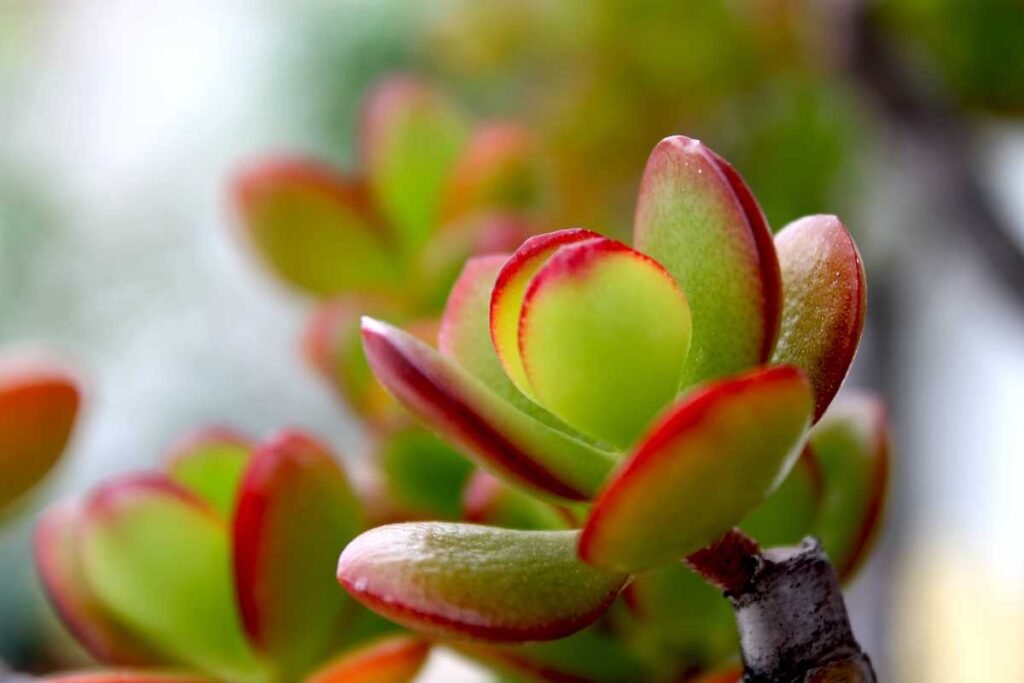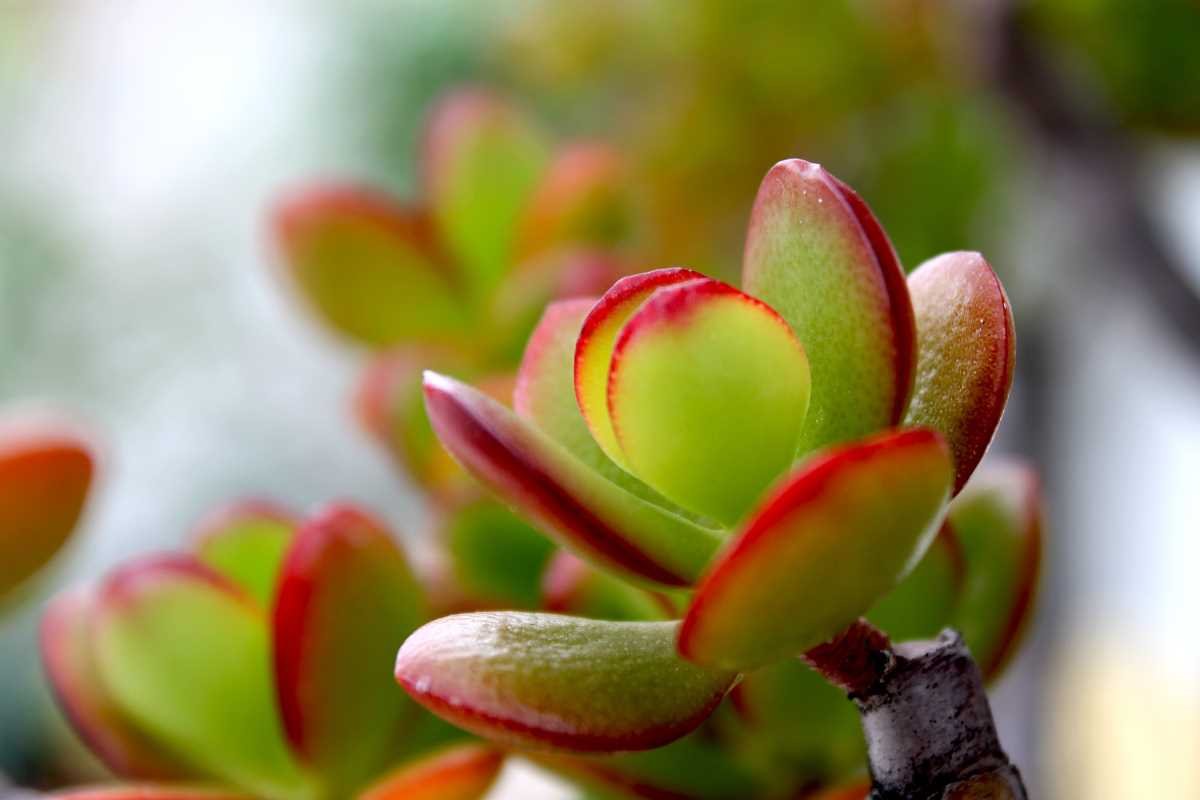Jade plants, scientifically referred to as Crassula ovata, have long been a popular choice among houseplant enthusiasts. Originating from South Africa, these succulents are admired for their sturdy, fleshy leaves and attractive growth habit. Their ability to thrive with minimal care and their aesthetically pleasing appearance make them a favorite in homes and offices alike.
Their succulent nature allows jade plants to store water in their leaves, making them exceptionally resilient to periods of drought. This characteristic, coupled with their slow growth rate and compact size, means they require infrequent watering and are relatively low-maintenance compared to other houseplants. These features contribute to their widespread appeal, especially among those who may not have a green thumb.
However, the very traits that make jade plants so desirable can sometimes lead to their potential disadvantages being overlooked. While they are indeed hardy and visually appealing, jade plants come with their own set of challenges that can affect their health and longevity if not properly managed. As we delve deeper into this topic, it is crucial to consider both the pros and cons of incorporating these succulents into your living space.

Table of Contents
Susceptibility to Overwatering
Jade plants, while popular for their hardy nature, have a notable vulnerability: they are highly susceptible to overwatering. This is a critical disadvantage that can lead to severe issues like root rot, a condition in which the roots of the plant decay due to excessive moisture. Root rot can drastically affect the health and longevity of your jade plant, often leading to its demise if not promptly addressed.
Proper watering techniques are essential in preventing this common problem. Jade plants thrive in well-draining soil that allows excess water to escape. Overwatering occurs when the soil retains too much moisture, creating an environment conducive to fungal growth, which in turn causes root rot. To mitigate this risk, it is vital to use a potting mix specifically designed for succulents, as it typically includes components such as sand, perlite, or pumice to enhance drainage.
Recognizing the symptoms of overwatering early can save your jade plant from severe damage. Common signs include yellowing leaves, which indicate that the roots are struggling to take up nutrients effectively due to excess water. Additionally, the plant’s stems may become mushy or soft to the touch, another indicator that the roots are decaying. If you observe these symptoms, immediate action is required to salvage the plant.
To prevent overwatering, adopt a cautious approach to watering your jade plant. Allow the soil to dry out completely between waterings. One practical method is to wait until the top inch of the soil is dry before adding more water. Furthermore, ensure that the pot has adequate drainage holes to facilitate the escape of excess water. Avoid using pots without drainage, as these can exacerbate overwatering issues.
In cases where overwatering has already occurred, it is crucial to address the problem promptly. Repotting the jade plant in fresh, well-draining soil can help. Remove any decayed roots and allow the plant to dry out before replanting. By understanding and addressing the susceptibility of jade plants to overwatering, you can maintain a healthier, more resilient plant.
Sensitivity to Temperature Changes
Jade plants, while popular for their hardy nature and aesthetic appeal, are particularly sensitive to sudden temperature fluctuations. The ideal temperature range for the optimal growth of jade plants is between 65°F to 75°F (18°C to 24°C) during the day, and slightly cooler at night. When temperatures fall within this range, jade plants can thrive, exhibiting robust growth and vibrant foliage.
However, exposing jade plants to extreme cold or heat can lead to significant stress and damage. Prolonged exposure to temperatures below 50°F (10°C) can cause the plant to suffer from cold damage, which manifests as blackening of leaves and eventual leaf drop. Similarly, temperatures exceeding 85°F (29°C) can lead to heat stress, causing the leaves to turn yellow, wilt, and fall off. Both scenarios severely impact the plant’s health and aesthetic value.
To protect jade plants from temperature stress, especially during seasonal changes, it is crucial to monitor the indoor and outdoor conditions closely. During colder months, ensure the plant is kept away from drafty windows and doors. Utilizing a room thermometer can help maintain a stable environment for the plant. If the temperature drops significantly, consider using a plant heating mat or moving the plant to a warmer location indoors.
In warmer seasons, avoid placing jade plants in direct, intense sunlight for prolonged periods. Instead, provide filtered light or partial shade to mitigate heat exposure. Additionally, ensuring proper air circulation can help in maintaining a consistent temperature around the plant. These preventive measures can help mitigate the disadvantages of growing jade plants in environments prone to temperature fluctuations, thus ensuring their health and longevity.
Pest Infestation Risks
Jade plants, while known for their resilience and ease of care, are not immune to pest infestations. Common pests that affect jade plants include mealybugs, spider mites, and aphids. These pests can cause significant damage to the plant, often leading to stunted growth, yellowing leaves, and in severe cases, plant death.
Mealybugs are small, white, cotton-like insects that typically congregate on the undersides of leaves and at stem joints. They feed on the plant’s sap, weakening it and making it more susceptible to disease. Spider mites, though barely visible to the naked eye, leave telltale signs such as fine webs on the plant. They also feed on the sap, resulting in speckled leaves and a silvery appearance. Aphids, small green or black insects, cluster on new growth and flower buds, sucking the plant’s fluids and transmitting viruses.
To prevent pest infestations, it is crucial to regularly inspect jade plants. Early detection can make a significant difference in managing pest populations. Natural preventive measures include maintaining proper plant hygiene, ensuring adequate air circulation, and avoiding overwatering, which can create a conducive environment for pests.
When an infestation occurs, several treatment options are available. Natural solutions include wiping the affected areas with a cotton swab dipped in rubbing alcohol, which can effectively remove mealybugs and aphids. A mixture of water and insecticidal soap can also be sprayed on the plant to manage spider mites. For more severe infestations, chemical treatments such as systemic insecticides may be necessary. However, these should be used as a last resort due to potential side effects on the plant and surrounding environment.
Understanding the risks associated with jade plant disadvantages, particularly pest infestations, and implementing appropriate preventive and treatment measures, can help ensure the health and longevity of these popular houseplants.
Challenges with Propagation
Propagation of jade plants, while a rewarding endeavor, can present several challenges, particularly for novice gardeners. The process typically involves two primary methods: leaf cuttings and stem cuttings. However, each approach has its pitfalls that can lead to unsuccessful attempts if not executed correctly.
Leaf cuttings are a popular method due to their simplicity. This process involves removing a healthy leaf from the jade plant and allowing it to dry for a day or two. The drying process is crucial as it helps the cut surface callus over, reducing the risk of rot once planted. However, a common mistake is not allowing sufficient drying time, which can lead to fungal infections and decay. Additionally, placing the leaf cutting in overly moist soil can also result in rot, making well-draining soil a necessity.
Stem cuttings, on the other hand, involve cutting a portion of the stem and letting it dry before planting. This method is generally considered more reliable than leaf cuttings, but it also comes with its own set of challenges. One critical mistake is taking cuttings from unhealthy or diseased plants, which can compromise the success rate. Furthermore, failing to provide adequate light and proper humidity levels during the initial rooting phase can hinder growth.
To mitigate these challenges, gardeners should follow a few essential steps. For both leaf and stem cuttings, ensure that the parent plant is healthy and free from pests or diseases. Allow cuttings to dry and callus for at least 24 hours before planting. Use a well-draining soil mix designed for succulents and avoid over-watering, as excessive moisture can lead to rot. Providing a warm, bright environment that mimics the jade plant’s native habitat will also enhance the chances of successful propagation.
Addressing these common propagation issues can help gardeners overcome the inherent jade plant disadvantages and enjoy the satisfaction of growing new plants from cuttings. With careful attention to detail and adherence to best practices, the propagation process can be significantly more successful.
Jade plants, while popular for their aesthetic appeal and low maintenance, do come with certain drawbacks, particularly for individuals who may be susceptible to allergies. Some people can experience allergic reactions when in contact with this plant, which can manifest through a range of symptoms.
Potential for Allergies
Allergic reactions to jade plants can vary in severity, often depending on the individual’s sensitivity. Common symptoms include skin irritation, such as redness, itching, and rashes. This can occur when the plant’s sap comes into direct contact with the skin. In more severe cases, respiratory issues may arise, characterized by symptoms like sneezing, coughing, and difficulty breathing. These reactions can be particularly troubling for individuals with pre-existing respiratory conditions such as asthma.
To safely handle jade plants and minimize the risk of allergic reactions, it is advisable to wear gloves when touching or pruning the plant. Washing hands thoroughly after contact can also help prevent the sap from causing skin irritation. Additionally, keeping the plant in a well-ventilated area can reduce the likelihood of airborne allergens exacerbating respiratory issues.
If an allergic reaction does occur, it is important to take appropriate steps to manage the symptoms. For mild skin irritation, rinsing the affected area with cool water and applying a soothing lotion or cream may provide relief. In case of respiratory symptoms, moving away from the plant and seeking fresh air can help alleviate discomfort. Over-the-counter antihistamines may also be effective in managing allergic reactions. However, if symptoms persist or worsen, it is crucial to seek medical attention promptly.
Understanding the potential jade plant disadvantages, especially concerning allergies, is essential for ensuring a safe and comfortable environment. By taking preventive measures and being prepared to address allergic reactions, individuals can enjoy the benefits of jade plants while minimizing health risks.
Jade plants, while commonly admired for their aesthetic appeal and ease of care, pose significant risks to household pets, particularly cats and dogs. The toxic nature of jade plants can lead to severe health issues in pets if ingested. Understanding these potential dangers is crucial for pet owners who wish to maintain both a beautiful home and a safe environment for their furry companions.
Symptoms of Jade Plant Poisoning in Pets
When a pet ingests parts of a jade plant, the initial symptoms may include vomiting, which serves as the body’s attempt to expel the toxic substances. Lethargy is another common symptom, where the pet exhibits unusual tiredness and a lack of energy. Incoordination, or difficulty in maintaining balance, can also manifest, indicating a disruption in the pet’s nervous system. These symptoms can vary in severity depending on the amount ingested and the size of the pet.
Keeping Pets Safe from Jade Plants
To mitigate the risks associated with jade plants, it is advisable to place them out of reach of pets. This could mean positioning the plants on high shelves, using hanging planters, or even dedicating a room to houseplants that pets are not allowed to enter. Additionally, pet owners should be vigilant and monitor their pets’ behavior around houseplants to ensure that they do not attempt to chew on them.
Steps to Take if Ingestion Occurs
If a pet is suspected to have ingested any part of a jade plant, immediate action is necessary. The first step is to remove any remaining plant material from the pet’s mouth. It is crucial to contact a veterinarian as soon as possible to seek professional advice. Providing the veterinarian with details about the ingestion, such as the amount consumed and the time of occurrence, will assist in determining the appropriate treatment. In some cases, the veterinarian may advise bringing the pet in for further examination and treatment, which might include induced vomiting or administration of activated charcoal to prevent further absorption of toxins.
Also read, Is Jade Plant Toxic to Cats? A Complete Guide for Pet Owners.
Conclusion and Final Thoughts
Throughout this blog post, we have explored the various disadvantages associated with jade plants. These issues include the plant’s susceptibility to overwatering, which can lead to root rot, and its vulnerability to pests such as mealybugs and spider mites. Additionally, jade plants can be toxic to pets if ingested, posing a significant concern for households with animals. Moreover, the plant’s growth can become leggy and weak without adequate sunlight, necessitating careful placement and monitoring.
Understanding these disadvantages is crucial for both current and prospective jade plant owners. Being informed about these potential issues allows you to make a more educated decision about whether a jade plant is suitable for your living environment. For those who already own a jade plant, knowledge of these drawbacks can help you take proactive steps to mitigate them, ensuring your plant thrives.
It is essential to weigh the pros and cons before deciding to keep a jade plant. While they are undoubtedly beautiful and can be a delightful addition to your home, the disadvantages of jade plants should not be overlooked. Proper care, such as appropriate watering practices, regular pest inspections, and ensuring the plant receives enough light, can significantly reduce the negative impacts and help you enjoy the benefits of this popular succulent.
By being mindful of the jade plant’s specific needs and potential pitfalls, you can cultivate a healthy and vibrant plant that enhances your indoor space. Taking the time to understand and address these disadvantages will ultimately lead to a more rewarding experience as a jade plant owner.

